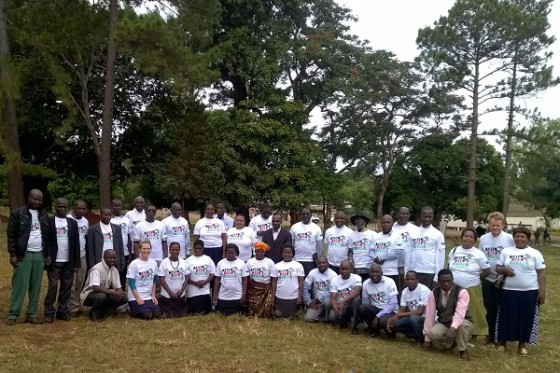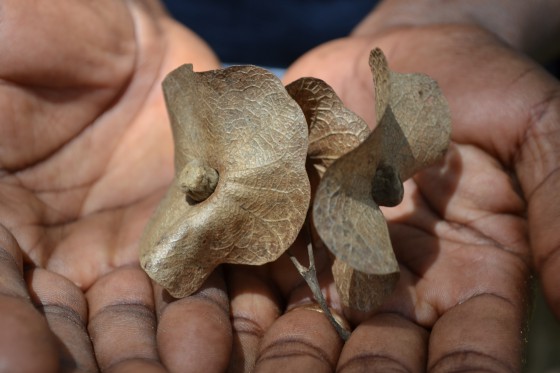Sampling the fruits of our labour
What a year for tree conservation! In this blog, we review our successes from 2016 and give a sneak peek of what’s in the nursery for 2017…..
Natural selection
Red listing is a key part of GTC’s approach, to prioritise where conservation efforts are most needed.
The updated Red List of Magnoliaceae published last year highlighted the startling truth that nearly half of the world’s magnolia species are threatened with extinction. In the face of habitat destruction and extraction from the wild, many magnolia species need a helping hand when it comes to survival!
Magnolia cubensis ssp. acunae (Critically Endangered) is endemic to Cuba
Pioneers
A first step in many species conservation projects is to carry out a population survey. In 2016, GTC and our partners set out in search of rare trees in Cuba, Japan and Vietnam.
Our partner Planta! went in search of the rare Tetralix nipensis in Cuba. With only six individual trees known to exist in the wild – all found in dry, thorny, thickets – this survey was no easy task. Surveying a previously unexplored area resulted in a huge boost for the species with 182 adult trees found in only two small sites! This trip not only identified the sites that need protection, it massively increased the amount of genetic material available to initiate a well-designed conservation programme for this species in 2017.
Tetralix nipensis survey site. Credit: Jose L. Gomez/Planta!
Germinating
In 2016, new seeds were sown as GTC launched new projects in Malawi, Tanzania and Saint Lucia.
In Malawi, 150 community members were employed in 10 new nurseries around the base of Mulanje Mountain to grow seedlings of Mulanje Cedar. This Critically Endangered conifer species, highly sought-after for its durable and aromatic timber, has all but disappeared from its only natural habitat on Mulanje Mountain. This project aims to restore populations on the mountain and provide a new income source for local people by creating a market for tree seedlings.

Participants of the Save Our Cedar project launch in Mulanje, June 2016
Blossoming
2016 was an important year for our ongoing projects too.
Among the fog covered slopes of the Yuanbao Mountains in north Guangxi, China, 100 seedlings of the Yuanbaoshan fir were planted in the first ever population recovery programme for this Critically Endangered tree, whose populations have greatly decreased due to logging. In December, seven months after planting, all 100 seedlings were surviving in the wild - a beacon of hope for the future of this species.
Fruits of Abies yuanbaoshanensis. Credit: Ding Tao/Guangxi Institute of Botany
Staking
In 2016, support was provided to more than 300 community members and conservationists, to help them improve their tree conservation skills and new resources were added to the GTC website.
In Nigeria, we hosted the first national training course on conservation techniques for tree species for 30 participants from government, academia, NGOs and arboreta. In a country facing rapid and indiscriminate deforestation, this course aimed to provide people with knowledge and vital skills to establish new projects to protect tree species from extinction.
IITA Forest Unit Field Supervisor, Olukunle Olasupo, demonstrated to delegates methods of seed extraction and seed cleaning from fruit of local native trees. Credit: Adam Harrower
Dispersing
2016 marked a new frontier in GTC’s engagement of young conservationists and oak specialists.
For the first time in its history, GTC offered research grants to MSc students carrying out applied research on threatened tree species, in an attempt to attract more young researchers into tree conservation. For 2017 we have increased the funding available, to be able to support double the amount of early-career conservationists.
Fifty oak experts from seven countries came together at workshop in Morelia, Mexico and the Oaks of the Americas Conservation Network was established as a result. This new network, coordinated by our partners, the Morton Arboretum, will guide and catalyse conservation action for threatened oak species throughout the region.
Members of the Oaks of the Americas Conservation Network at an international oak conservation workshop in Morelia, Mexico. March, 2016
Propagating
Working with our growing global network of partners, in 2017 we will be resuming our hunt for the Critically Endangered gergeranian pear (Pyrus gergerana) in the Caucasus mountains, collecting seed from small populations of Karomia gigas in the coastal forests of Tanzania and providing training in tree conservation techniques in Mauritius – an island home to more than 20 Critically Endangered tree species with less than 50 remaining individuals in the wild. This year we plan to support teams of young biologists to carry out threatened tree species projects, and, for the first time ever, we will publish a complete list of all of the known tree species in the world!

Seeds of Karomia gigas